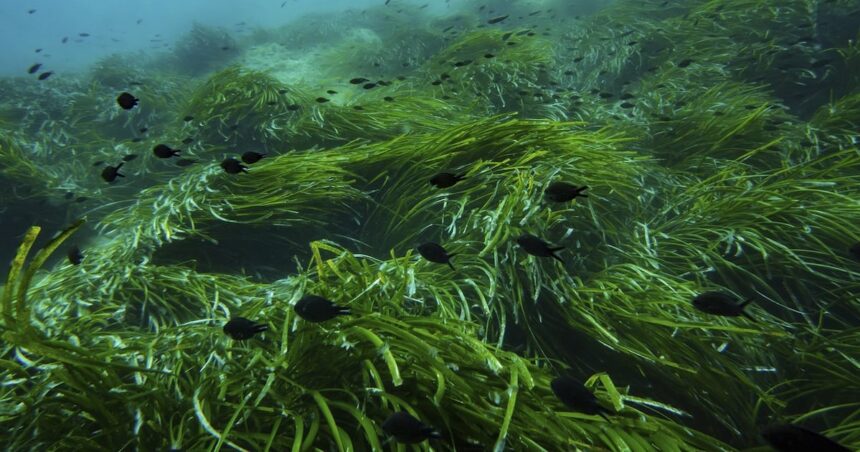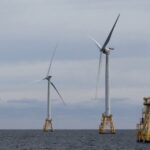Through the glass walls of the Brest Convention Centre, waves crash against the rocky French coastline as world leaders gather for the 2024 UN Ocean Conference. It’s a fitting backdrop for what many participants are calling our “last chance” to protect the planet’s most vital ecosystem.
I arrived yesterday to find a strange mix of urgency and ceremony. French President Emmanuel Macron opened the proceedings with powerful rhetoric about the ocean’s decline, but many of the scientists and coastal community representatives I’ve spoken with are asking the same question: When will promises become protection?
“We have more declarations about saving the ocean than we have healthy coral reefs left,” Dr. Amina Mohammed from the Scripps Institution of Oceanography told me during a coffee break between sessions. “The science is absolutely clear. What’s missing is the political courage to act on it.”
The conference comes at a critical moment. The Intergovernmental Panel on Climate Change reports that more than 80% of marine ecosystems show evidence of accelerating impacts from climate change. Ocean acidification has increased by approximately 30% since pre-industrial times according to data from the National Oceanic and Atmospheric Administration, threatening shellfish, coral reefs, and the food security of billions who rely on seafood protein.
This morning, I joined a group of Indigenous delegates from coastal regions in Canada, Fiji, and Norway for an early breakfast discussion. Their presence feels different from previous ocean conferences – more central, less tokenistic.
“Our communities have lived in balance with the ocean for thousands of years,” explained Sarah Wolfson, a member of the Haida Nation from British Columbia. “Now we’re watching that relationship collapse in a single generation. When we talk about marine protection, we’re talking about cultural survival.”
The science and diplomacy at these events can sometimes feel removed from reality, but Wolfson’s words ground the abstractions in human experience. Her community’s traditional shellfish harvesting areas have been devastated by ocean acidification and warming waters.
Walking through the exhibition hall, I’m struck by the contrast between glossy corporate displays promoting “blue economy” initiatives and the modest booths of grassroots conservation groups. One display by the Global Fishing Watch organization demonstrates satellite tracking of illegal fishing vessels – a technology that’s revealing the true scale of exploitation happening beyond territorial waters.
“We’re mapping what was previously invisible,” explains Emilio Garcia, a data scientist with the organization. He shows me a time-lapse visualization of fishing activity in the Pacific that looks like a constellation of stars – each light representing a vessel potentially depleting already struggling fish populations.
The conference’s central focus is implementation of the High Seas Treaty, adopted by the UN General Assembly in 2023 after nearly two decades of negotiations. The treaty creates a legal framework to establish marine protected areas in international waters – which make up nearly two-thirds of the world’s oceans but have historically lacked governance structures.
“We finally have the legal tools, but the question is whether we have the political will to use them,” says Dr. Sylvia Earle, the legendary marine biologist, when I catch a few minutes with her between panels. At 88, she speaks with the urgency of someone who has witnessed the ocean’s decline firsthand over a lifetime of exploration.
The World Wildlife Fund released data during the conference showing that less than 3% of the world’s oceans are effectively protected, despite international commitments to reach 30% by 2030. The gap between ambition and implementation remains staggering.
Over lunch with delegates from various Pacific Island nations, the conversation turns to climate justice. “Our countries contributed the least to climate change but are suffering its worst effects through sea level rise and stronger storms,” says Mere Tuivaga, Fiji’s Deputy Minister for Climate Change. “We need more than words from the big emitters.”
The afternoon features negotiations on financing mechanisms for marine conservation. The discussions are technical but consequential – without dedicated funding, even the most ambitious protection goals remain aspirational.
Several countries announce new financial commitments. Norway pledges $300 million for a blue carbon initiative to protect and restore seagrass meadows, salt marshes, and mangrove forests – ecosystems that sequester carbon at rates up to five times greater than tropical forests, according to research published in Frontiers in Marine Science.
Canada’s Minister of Fisheries and Oceans announces an expansion of its Marine Protected Area network, focusing on areas identified by Indigenous communities as culturally significant. The approach represents a shift toward co-management that recognizes traditional ecological knowledge alongside western science.
As the day ends, I join a small group of conference participants on the shore. The tide is low, exposing rock pools teeming with life – sea stars, anemones, and small crabs adapted to the rhythms of this coastline over countless generations.
A marine biologist from the University of Brest who leads the impromptu excursion points to a pool where mussels have visibly thinned compared to historical baselines. “This is happening everywhere,” she says quietly. “The ocean is sending us messages. The question is whether we’re listening.”
Tomorrow’s sessions will focus on plastic pollution and the newly negotiated global plastics treaty. With an estimated 11 million metric tons of plastic entering the ocean annually according to the UN Environment Programme, the issue bridges environmental protection, public health, and economic concerns.
As night falls over Brest, the conference center glows with activity – side events, networking receptions, and continued negotiations. The ocean beyond disappears into darkness, a reminder of how much remains unknown about the planet’s largest ecosystem even as we race to protect it.
What’s clear from this first day is that the gap between scientific understanding and political action continues to widen. The ocean is changing faster than governance systems can respond. Yet the presence of youth delegates, Indigenous knowledge holders, and committed scientists offers glimmers of hope amid sobering assessments.
The path from promises to protection remains the central challenge. As one delegate put it during the closing plenary: “The ocean has always given us everything. Now it needs something from us.”






